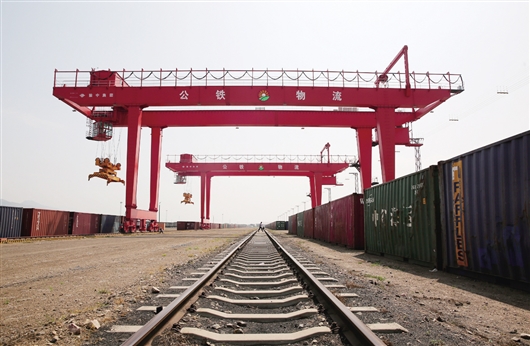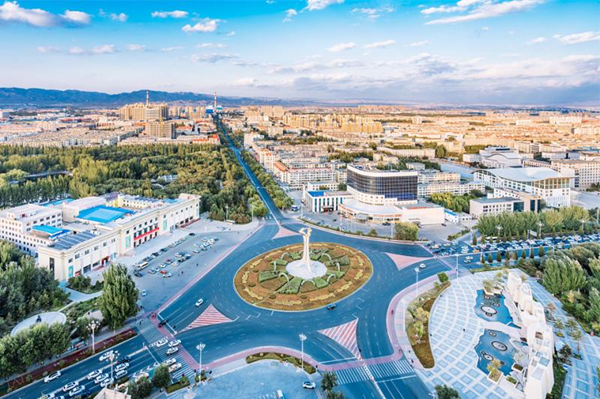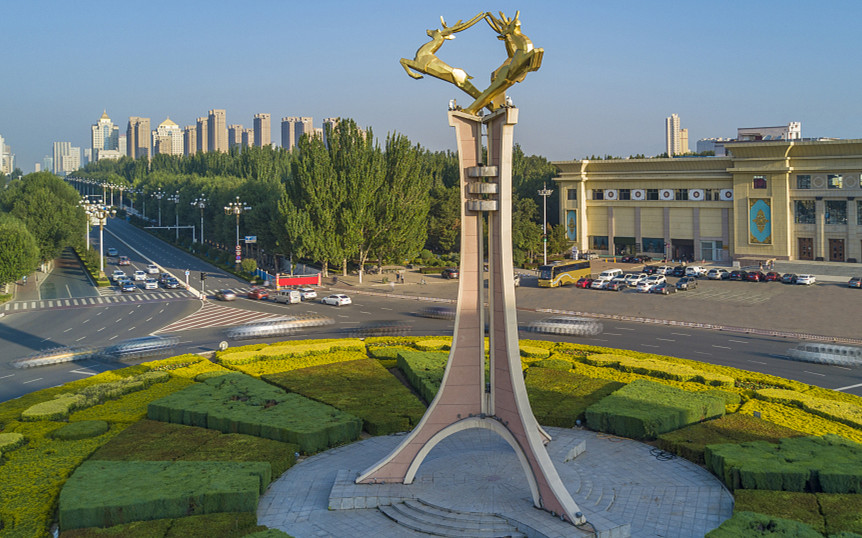Baotou city adds new intermodal freight hub
An important new dry or inland port -- an inland intermodal terminal connected by road and rail to Tangshan port – was established recently in Baotou city in northern China.
The Tangshan Port Inner Mongolia Highway and Railway Logistics Inland Port was officially launched with a ceremony held on Aug 1, attended by officials from Baotou, in North China’s Inner Mongolia autonomous region, and Tangshan, in northern China’s Hebei province, according to local media.
The new dry or inland port, co-developed by Inner Mongolia Railway Logistics Co and Tangshan Port Group, will be an inter-regional multimodal transportation hub. It lies more than 900 kilometers inland by road from Tangshan port.
Being one of the most important industrial centers in China, Baotou is also a transportation hub for Inner Mongolia and one of 17 regional logistics node cities in China. Located at the center of the China-Mongolia-Russia economic corridor, the city plays a critical role in strengthening trade and communications ties with foreign countries.
Officials said Baotou's hosting of the intermodal freight hub will facilitate cargo transportation, lower the costs of transportation and boost the economy in Northwest China.
Founded in 2005, Inner Mongolia Railway Logistics Co has built seven railway lines. At its main 173-hectare site there are two railway gantry cranes for highway and railway logistics. The railway junction station is at Gongjiban Station. The company has constructed a comprehensive railway logistics park with comprehensive storage and related facilities, equipped with railway and port transportation. The annual transportation capacity is 30 million tons.
Company executives said that through years of development and efforts, it has built up a wide and deep experience in railway logistics, extended its supply chain management services by leveraging its railway infrastructure and gradually developed an international-oriented sea-rail logistics port.
Tangshan Port Group is a large-scale State-owned enterprise integrating three national-level demonstration projects for a green port, smart port and multimodal port.
Officials said it is the most comprehensive port company based in Hebei province, and has achieved a series of major achievements in sea-rail combined transport, route expansion and automated terminal construction.
In terms of its land network, 16 dry or inland ports have been established in domestic regions including Inner Mongolia, Xinjiang, Shanxi, and Beijing.
A total of 18 sea-rail intermodal rail routes have been launched. In terms of its maritime network, it operates 40 domestic and foreign-funded container routes, directly to the main domestic coastal ports and nine basic ports of Japan and the Republic of Korea, and has achieved complete links to 28 Japanese partial ports.

Loading facilities swing into gear at a terminal at Tangshan Port Inner Mongolia Highway and Railway Logistics Inland Port [Photo/Baotou Evening News]





 Sketching and creation tour in Baotou
Sketching and creation tour in Baotou